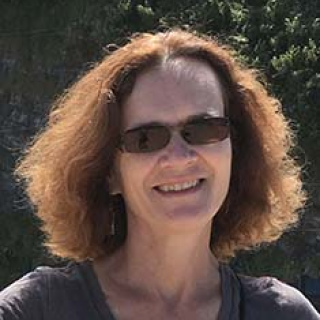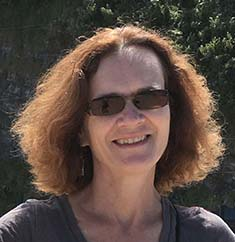
Patricia M. Day, Ph.D.
- Center for Cancer Research
- National Cancer Institute
- Building 37, Room 4112
- Bethesda, MD 20892-4263
- 240-760-6480
- 240-541-4502
- pmd@nih.gov
RESEARCH SUMMARY
My major projects in LCO have involved applying cell biological techniques to questions of papillomavirus entry and early events in infection. In one of my early studies in this area I defined the cellular pathway utilized by papillomaviruses for uptake and intracellular transport during the establishment of infection. In a separate project, I developed an assay to evaluate viral uncoating by assessing antibody accessibility to the carboxyl terminus of L2 and the viral genome.
Areas of Expertise

Patricia M. Day, Ph.D.
Research
My major projects in LCO have involved applying cell biological techniques to questions of papillomavirus entry and early events in infection. In one of my early studies in this area I defined the cellular pathway utilized by papillomaviruses for uptake and intracellular transport during the establishment of infection.
In a separate project, I developed an assay to evaluate viral uncoating by assessing antibody accessibility to the carboxyl terminus of L2 and the viral genome. This allowed me to determine that the minor capsid protein, L2, mediates the delivery of the genome to a transcriptionally active nuclear domain, ND10. I have found that intact ND10 are also critical for efficient establishment of infection.
I also demonstrated that the L2 capsid protein is modified by the cellular protease, furin during endocytosis. This cleavage is critical for the infectious process. In the absence of furin cleavage both the L2 protein and the genome are retained within the endosomal compartment. This was the first identification of a role for furin in the entry of any virus. More recently I have evaluated the mechanism of neutralization of various monoclonal antibodies. This led to the understanding of which different regions of the capsid interact with either cell surface receptors or the extracellular matrix. I have also been evaluating conformational changes of the viral capsid that occur on the cell surface. I made a panel of monoclonal antibodies that recognize an open capsid conformation that occurs soon after cell binding. We are hopeful that these studies will lead to the development of a cross-neutralizing immunogen.
In addition to these projects within LCO, I have established collaborative projects with other NIH laboratories and also extramural laboratories. Currently I am collaborating with Ari Helenius at the Swiss Federal Institute of Technology in Zurich, to further investigate the endocytic pathway with a specific emphasis on cellular signaling molecules that are necessary for infection. Another current collaborative effort, with Richard Roden at Johns Hopkins University, involves the investigation of the mechanism of neutralization of anti-L2 monoclonal antibodies.
Publications
Interferon gamma prevents entry of human papillomavirus 16 via an L2-dependent mechanism
Involvement of nucleophosmin (NPM1/B23) in assembly of infectious HPV16 capsids
The HPV16 and MusPV1 papillomaviruses initially interact with distinct host components on the basement membrane
Concepts of papillomavirus entry into host cells
Identification of a role for the trans-Golgi network in human papillomavirus 16 pseudovirus infection
Biography

Patricia M. Day, Ph.D.
Dr. Day completed her B.S. in biology at St. Lawrence University in Canton, New York. She then earned a Ph.D. from the Department of Microbiology and Immunology at the University of North Carolina at Chapel Hill. Her thesis work, in the laboratory of Dr. Jeffrey Frelinger, delineated the function of a nonclassical class I protein, Qb-1. She did a postdoctoral fellowship in the laboratory of Dr. Jonathan Yewdell and Dr. Jack Bennink in the Laboratory of Viral Diseases in NIAID, NIH. This work focused on the intracellular trafficking of class I molecules. She then joined the Laboratory of Cellular Oncology. Her major projects in LCO have involved applying cell biological techniques to questions of papillomavirus entry and early events in infection.
